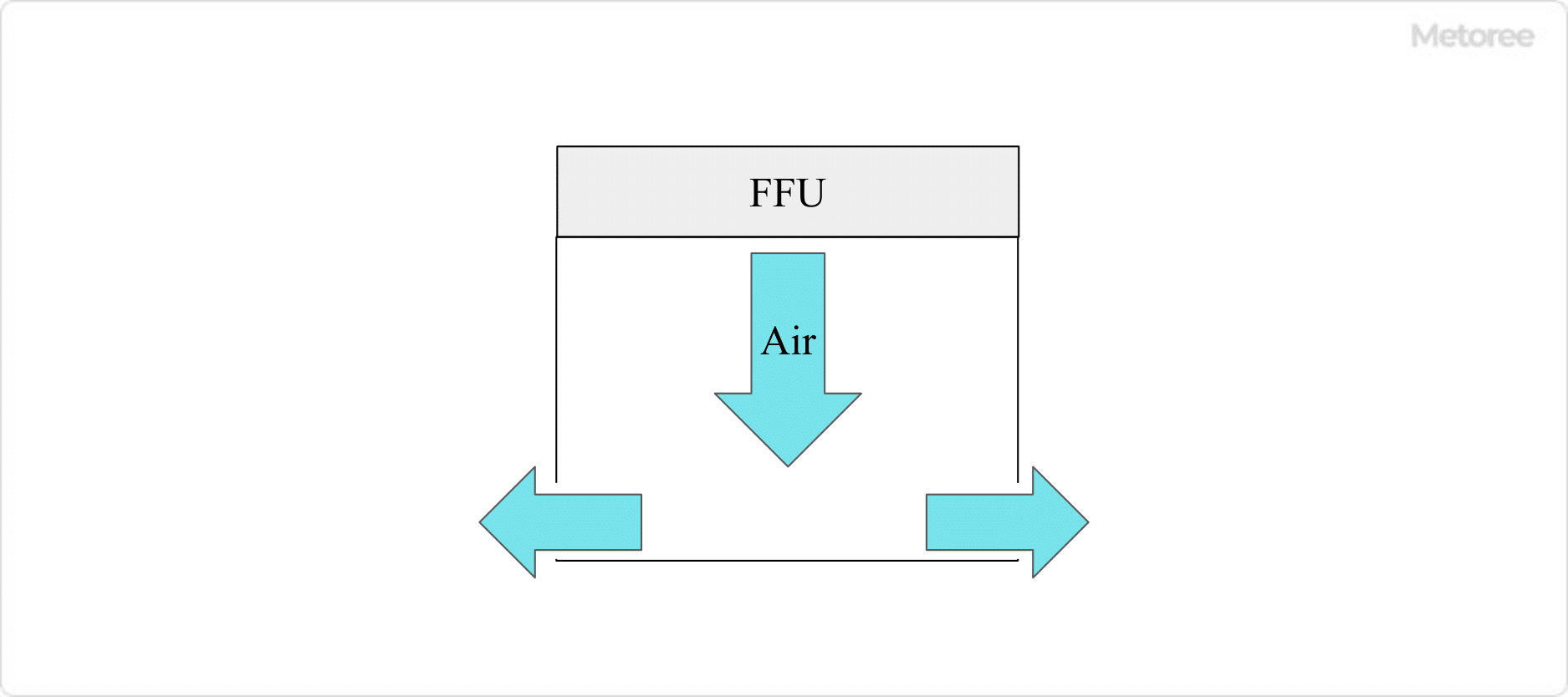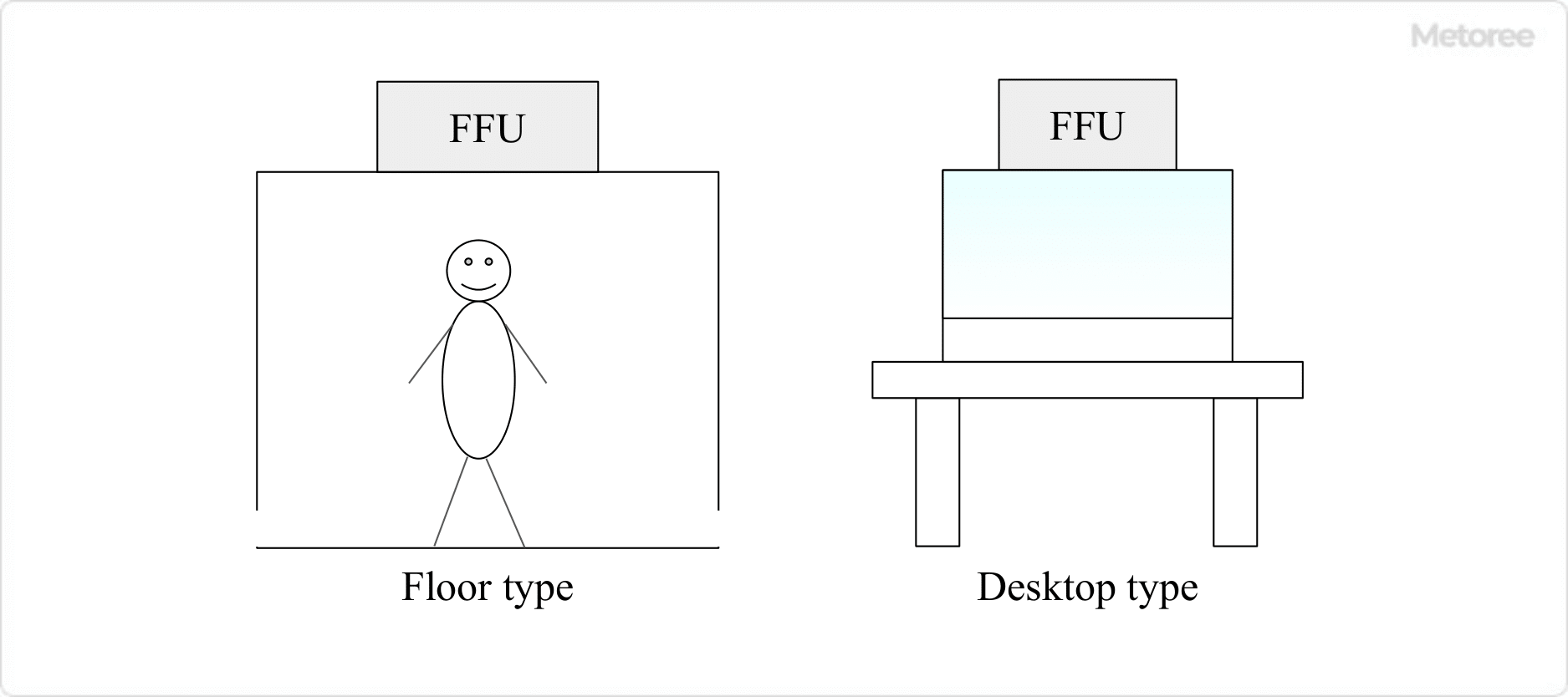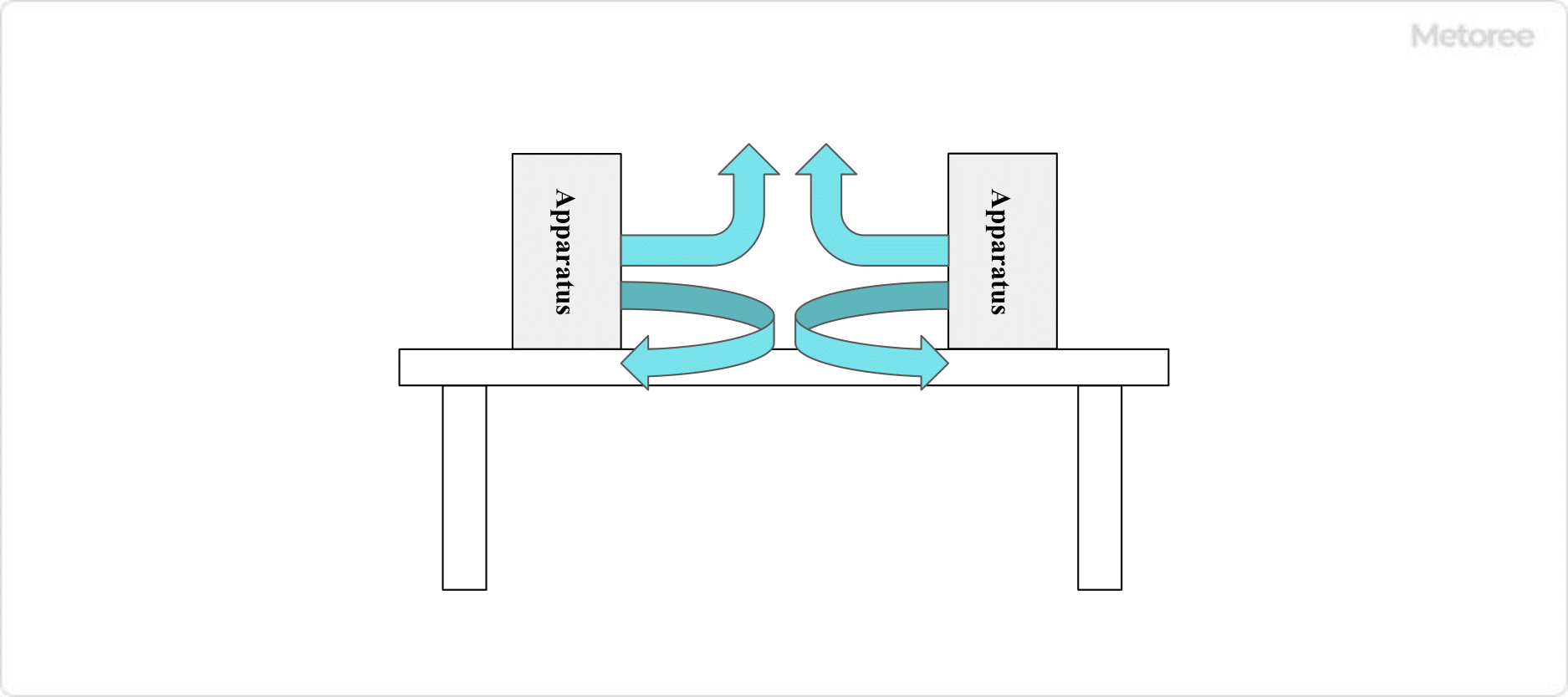What Is a Clean Booth?
A clean booth is a space cleaning system that maintains a positive pressure in a simple space to prevent dust from entering from the outside.
Unlike a clean room, which requires strict control, a clean Booth is used in situations where a localized and simple space cleaning environment is required.
Uses of a Clean Booth
Clean rooms remove dust and other particles from the air at a microscopic level, while at the same time controlling temperature and humidity within a certain range. These performance requirements are standardized by ISO, making it an extremely advanced space cleaning system.
Clean booths, on the other hand, are used when a certain level of cleanliness is required locally, without the need to control the cleanliness of a large area of workspace. For example, they are used in semiconductor manufacturing plants, liquid crystal panel manufacturing plants, pharmaceutical manufacturing facilities, cosmetics manufacturing facilities, and food manufacturing plants.
Clean booths may also be used in conjunction with clean rooms when further improvement of the clean environment is required.
Principle of Clean Booths

Figure1. Principle of a clean booth
In general, clean rooms, the space cleaning environment is strictly controlled using insulation panels to enable control of humidity and temperature, air conditioning, positive pressure equipment to enable room pressure setting, differential pressure damper, and other cleanliness equipment.
In contrast, a general clean booth is a small space composed of a frame, etc., covered with a polyvinyl chloride sheet or the like to shut off the space from the outside, and clean air is supplied by a fan filter unit (FFU) installed on the ceiling of the clean booth to maintain a clean environment. The pressure inside the clean booth is controlled by the FFU. The pressure inside the clean booth is maintained at a positive pressure by the FFU, preventing dust from entering from outside. Depending on the size of the clean booth to be installed, it is most important to select an FFU to maintain positive pressure in the interior space.
How to Use a Clean Booths
The following are points to be considered when using a clean booth.
It is essential to make sure that no dust, dirt, or microorganisms are brought into or generated in the clean booth. It is dangerous to rely solely on the performance of the clean booth. Rules and procedures for using the booth must be determined in advance, and the awareness of the users themselves must also be improved.
Cleaning of FFUs is also important. In particular, failure to clean the inlet port will reduce the cleanliness of the booth, so it is necessary to establish a procedure for periodic cleaning.
The clean booth is a simple system and has a gap at the bottom. Although the inside of the clean booth is controlled at a positive pressure, insects can still enter, and the floor around the clean booth should be kept clean on a regular basis.
The frequency and method of cleaning and the frequency of filter replacement will vary depending on the level of cleanliness required. It is necessary to consider in advance what kind of management is necessary according to the conditions of the environment in which the booth will be used.
Types of Clean Booths
1. Floor Type and Tabletop Type

Figure2. Floor and desktop clean booths
The floor type is a large, clean booth installed on the floor and manned by people. They are used for large-scale work. In general, workers entering the booth must wear clean clothes to prevent foreign objects from entering the clean booth. Floor-type clean booth is mainly used in factories and other manufacturing sites.
Table-top clean booths are small clean booths installed on tables. Generally, only hands are allowed inside the clean booth, so workers do not need to wear clean clothes, making it easy to use. Tabletop clean booths are smaller and more compact than other types of clean booths, making them suitable for use in laboratories and factories with limited space. They are also generally easy to install and maintain and relatively inexpensive, so they are used by many companies and research institutes.
2. Closed Type and Open Type

Figure3. Open-type clean booth
Closed-type clean booths, which create an enclosed space, are the most common type, but open-type clean booths are also available. An open-type Clean Booth is a type of equipment in which a constant flow of clean air is generated between pairs of airflow units, and work is performed in this space. Compared to closed-type clean booths, open-type clean booths are more portable and are used when a localized workspace needs to be kept in a highly clean environment at the Class 1 level.
3. Standard Type and Custom Type
Clean booth manufacturers sell clean booths of standard sizes and specifications, but they also accept customization from users. The standard type is available in a specified size at a lower cost than the custom type. Custom types can be made in any size desired, and various options can be added, such as adding an FFU anemometer.
Other Information on Clean Booths
1. Curtains for Clean Booths
There are various types of curtains for clean booths with different characteristics, which are selected according to the conditions of the environment in which they will be used.
The functions of curtains include fireproofing, insect repellency, antistatic, heat shielding, and light shielding. Curtains with antistatic functions are effective because static electricity creates an environment where dust and dirt can easily adhere.
2. Clean Booth With Aluminum Frame
Some clean booths are made with aluminum frames.
Advantages of using aluminum frames include the following:
- Lightweight
Aluminum is a very light metal, with a specific gravity of approximately 2.7 for aluminum and 7.8 for steel. Aluminum weighs about 1/3 of iron. - Manufacturing Costs and Time Can be Reduced.
Aluminum frames are often anodized on the surface. This reduces the number of processes, such as plating and painting, leading to cost and time savings. - Easy to Make Design Changes
Since aluminum is a soft metal, it is easier to process than other metals. It is also relatively easy to drill or cut holes later.